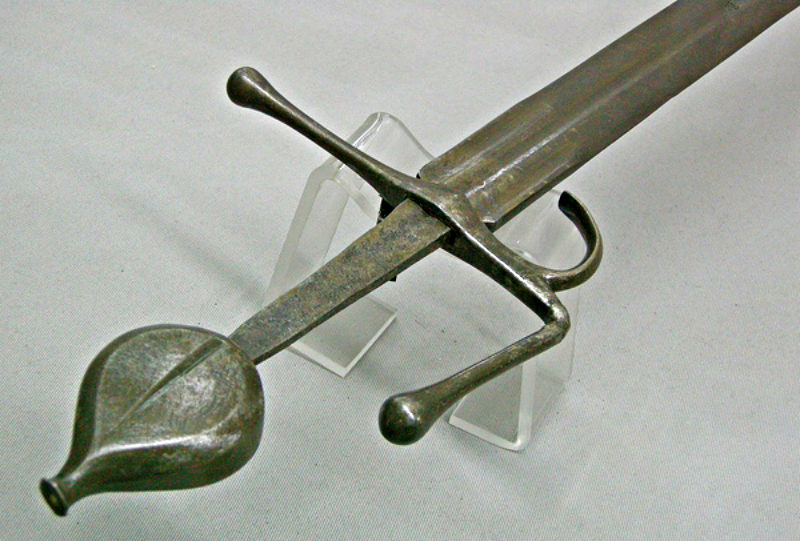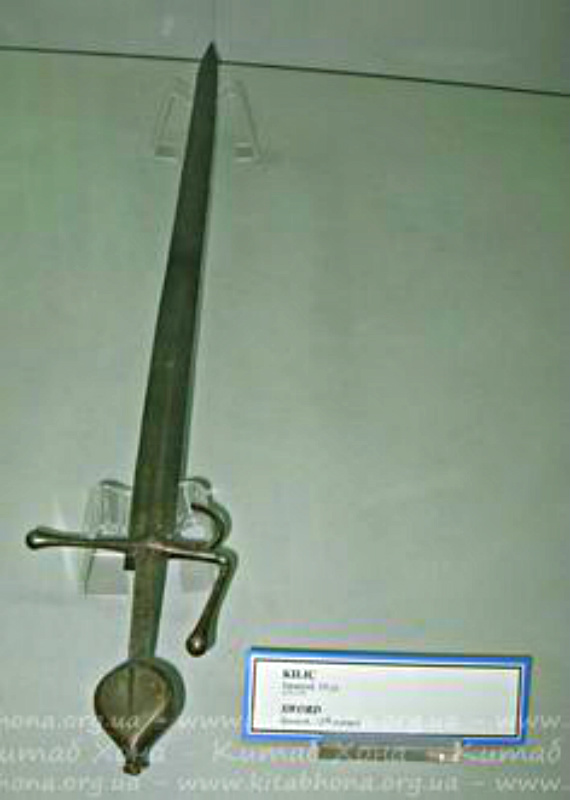I am fascinated by this sword. Thanks for any help that you can give me.






| Mark Lewis wrote: |
| Here's another very similar sword to the one originally posted: it's in Valencia, and according to legend is the sword of King Jaime I. Anyway, another Spanish connection. I'm guessing the rear quillon was originally perpendicular to the blade and was bent later... and the fuller is off center, seems like it may be single-edged for most of it's length? The video clip shows the full length of the sword around 40 seconds in.
[ Linked Image ] https://www.youtube.com/watch?v=sFhYYGN5E6E |
| JG Elmslie wrote: |
| I would be surprised if the true edge quillon/arm had been bent at a later date - in proportion and length, it is entirely characteristic of early knuckle-bow grips of similar style found in a number of examples of single-edged arms. |
| JG Elmslie wrote: |
| Must be time travellers, not that people just make up stories about all these swords, right...? |